Supply Side Monitor
The Dezernat Zukunft Supply Side Monitor offers an overview of the supply-side dynamics of inflation. Recent supply chain disruptions and commodity price shocks caused by the COVID-19 pandemic, climate change, and geopolitical conflicts have demonstrated that inflation is not always driven by demand factors, such as rising wages or government expenditures. Nor is it always possible for the monetary authority to look through supply-side inflation.
To offer a granular and timely view of these supply-side dynamics, the monitor combines two main data sources: monthly sectoral producer output volumes and prices, as collected and published by Destatis; and quarterly business survey data on reported production constraints, from the ifo Business Survey.
Sectors are classified into four groups: 1) Energy, 2) Food, 3) Automotive, Machinery, and Electronics, and 4) Materials. Additionally, the weights for the producer price index (PPI weights) of each sector is displayed. Each table can be sorted according to PPI weights, change rates for price and output, and limiting factors
A detailed guide to the Supply Side Monitor is available here. The monitor is updated monthly. We hope that this monitor can help to facilitate timely and appropriate macroeconomic policy decisions, by flagging supply-side disruptions as early and precisely as possible.
Energy
Food and Beverages
Automotive, Machinery, and Electronics
Materials
Supply Side Monitor
The Dezernat Zukunft Supply Side Monitor offers an overview of the supply-side dynamics of inflation. Recent supply chain disruptions and commodity price shocks caused by the COVID-19 pandemic, climate change, and war have demonstrated that inflation is not always driven by demand factors, such as rising wages or government expenditures, nor is it always possible for the monetary authority to look through supply-side inflation.
To offer a granular and timely view of these supply-side dynamics, the monitor combines two main data sources: monthly sectoral producer output volumes and prices, as collected and published by Destatis; and quarterly business survey data on reported production constraints, from the ifo Business Survey.
Sectors are classified into four groups: 1) Energy, 2) Food, 3) Automotive, Machinery, and Electronics, and 4) Materials. In addition, the weights for the producer price index (PPI weights) of each sector are shown. Each table can be sorted according to PPI weights, change rates for price and output, and limiting factors
A detailed guide to the Supply Side Monitor is available here. The monitor will be updated monthly. We hope that this monitor can help to facilitate timely and appropriate macroeconomic policy decisions, by flagging supply-side disruptions as early and precisely as possible.
The monitor is optimized for desktop use. Some features may not function properly on mobile other devices. For optimal usage, please use a laptop or an external screen.
Energy
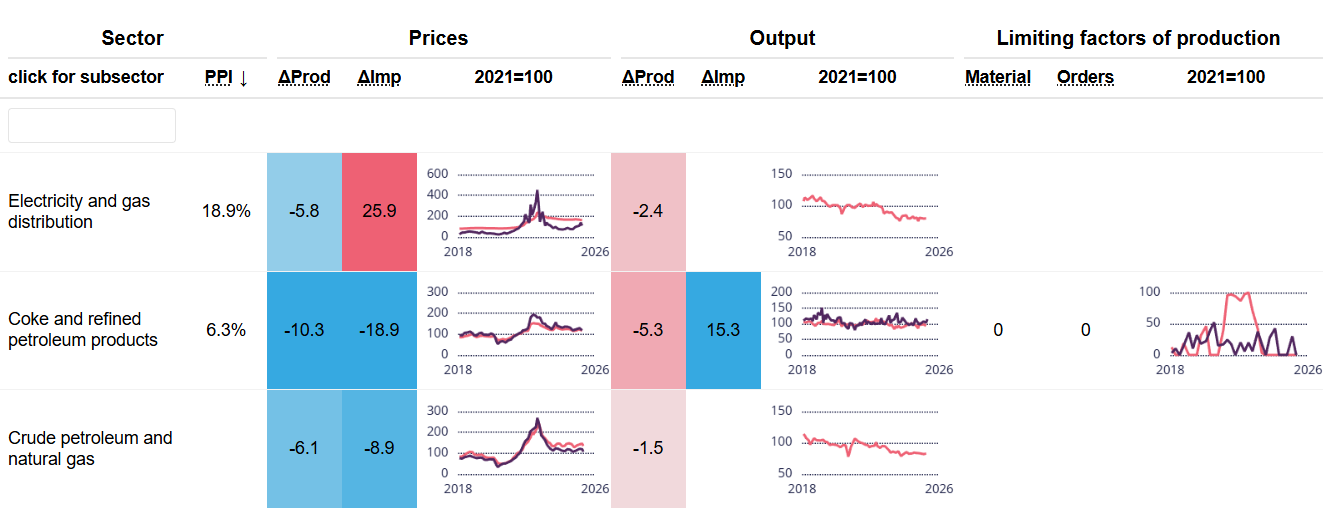
Food and Beverages

Automotive, Machinery, and Electronics
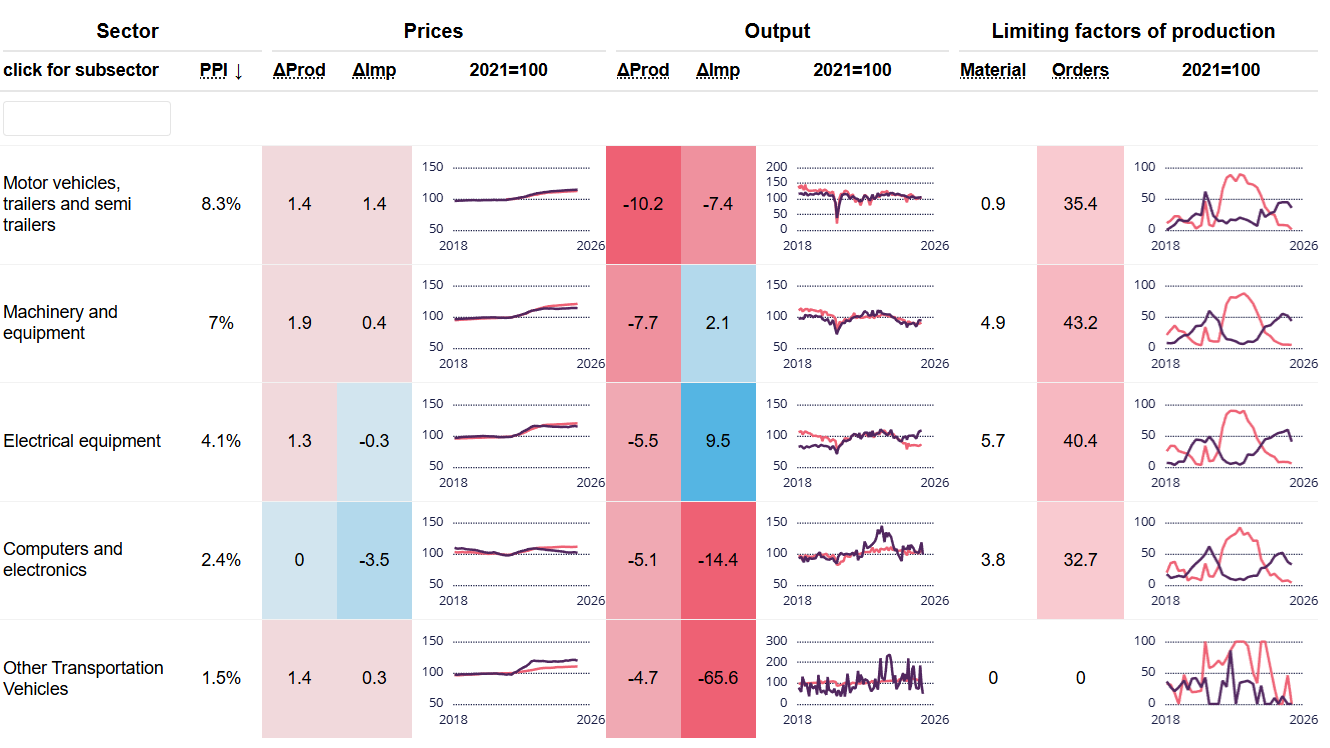
Materials
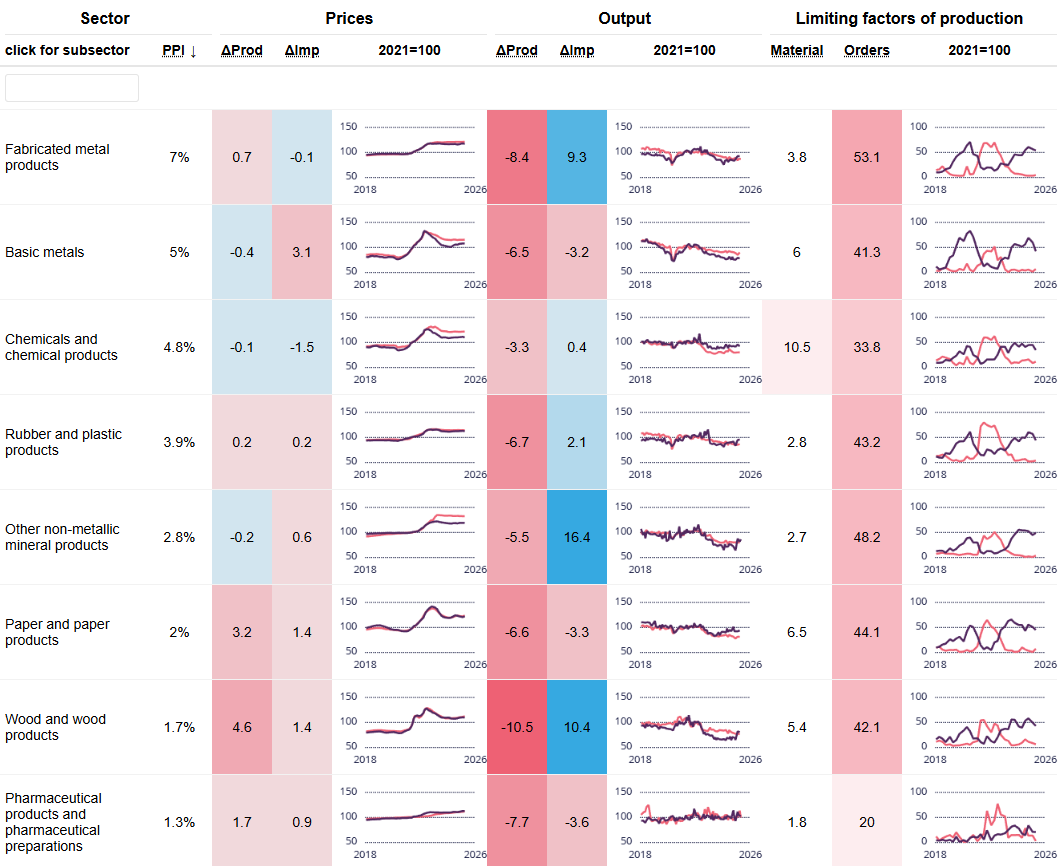
Supply Side Monitor
The Dezernat Zukunft Supply Side Monitor offers an overview of the supply-side dynamics of inflation. Recent supply chain disruptions and commodity price shocks caused by the COVID-19 pandemic, climate change, and war have demonstrated that inflation is not always driven by demand factors, such as rising wages or government expenditures, nor is it always possible for the monetary authority to look through supply-side inflation.
To offer a granular and timely view of these supply-side dynamics, the monitor combines two main data sources: monthly sectoral producer output volumes and prices, as collected and published by Destatis; and quarterly business survey data on reported production constraints, from the ifo Business Survey.
Sectors are classified into four groups: 1) Energy, 2) Food, 3) Automotive, Machinery, and Electronics, and 4) Materials. In addition, the weights for the producer price index (PPI weights) of each sector are shown. Each table can be sorted according to PPI weights, change rates for price and output, and limiting factors
A detailed guide to the Supply Side Monitor is available here. The monitor will be updated monthly. We hope that this monitor can help to facilitate timely and appropriate macroeconomic policy decisions, by flagging supply-side disruptions as early and precisely as possible.
The monitor is optimized for desktop use. Some features may not function properly on mobile other devices. For optimal usage, please use a laptop or an external screen.
Energy
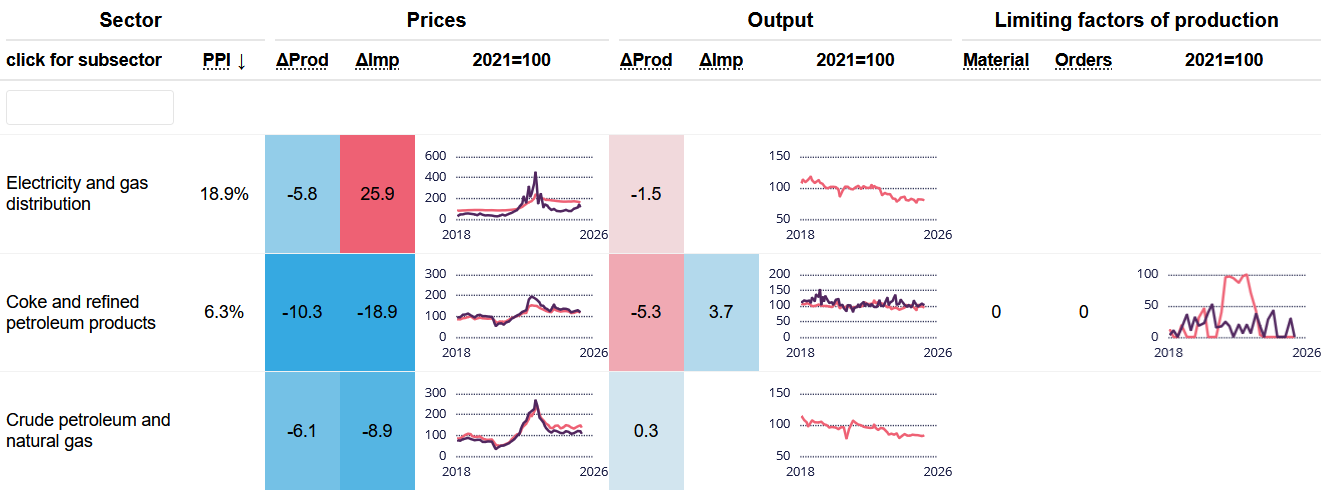
Food and Beverages

Automotive, Machinery, and Electronics
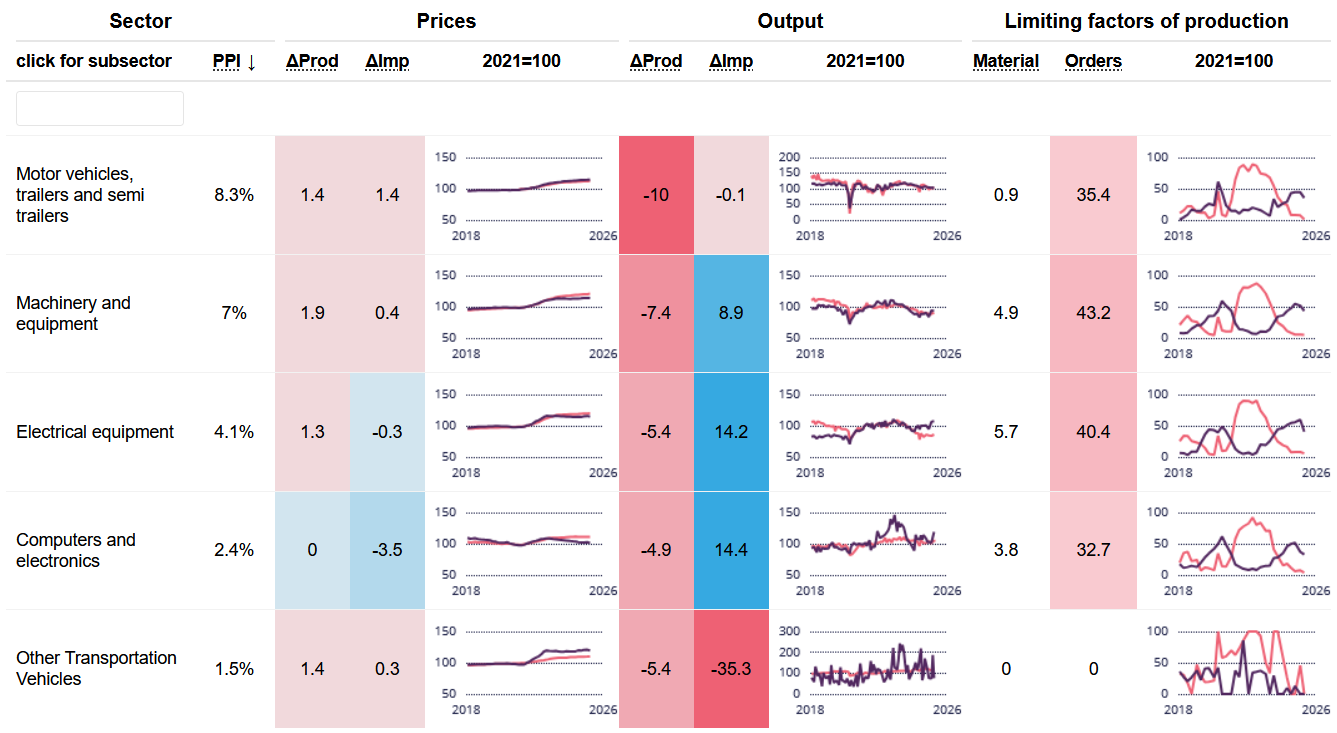
Materials

Last updated: 09.07.2025
We welcome feedback and suggestions regarding the Supply Side Monitor. Please contact: aurora.li@dezernatzukunft.org

